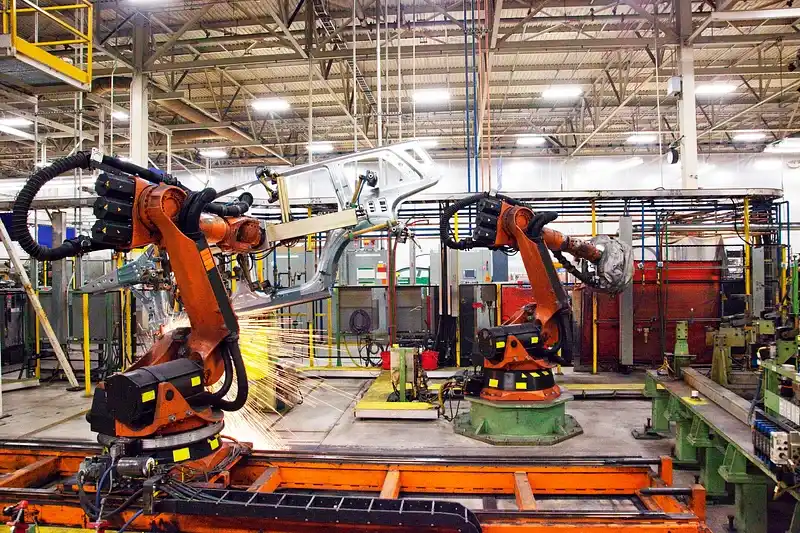Introduction
Machine vision systems have ushered in a new era in the dynamic landscape of manufacturing and production, where guaranteeing product quality is paramount for maintaining a competitive edge. While traditional human inspection methods hold value, they grapple with limitations in accuracy, speed, and scalability. However, with the advent of machine vision systems, a transformative force has emerged, reshaping the very contours of quality control.
Overview of Quality Control
Quality control stands as the cornerstone of product integrity, ensuring that items meet predetermined standards, thereby minimizing defects and deviations from desired outcomes.
Importance of Maintaining High-Quality Standards
The significance of maintaining high-quality standards cannot be overstated. It is paramount for building consumer trust and preserving a business’s market reputation.
Evolution of Quality Control
Traditional Methods
Historically, quality control relied on human inspection methods, which, while effective to a certain extent, had limitations. These limitations included the potential for human errors and an inability to meet the demands of modern production.
Limitations of Human Inspection
Human inspection, while valuable, faced constraints such as fatigue, subjectivity, and challenges in handling large product volumes with precision.
Introduction of Machine Vision Systems
The introduction of machine vision systems marked a transformative shift. These systems leverage advanced sensors and algorithms, providing a more robust and efficient approach to quality control.
Understanding Machine Vision Systems
Definition and Components
Machine vision systems comprise a sophisticated array of components, including cameras, sensors, and advanced algorithms. These components work in tandem to analyze and interpret visual information.
Basic Workings of Machine Vision
The basic workings involve capturing images, processing them through algorithms, and making real-time decisions based on predetermined criteria.
Key Components of a Machine Vision System
Critical components include cameras, lighting, image sensors, and processing units. The synergy of these elements ensures accurate analysis in quality control.
Applications in Various Industries
Machine vision systems find applications across diverse industries, from manufacturing and healthcare to agriculture and the automotive sector. Their versatility contributes to improved quality control in various domains.
Benefits of Machine Vision Systems in Quality Control
Enhanced Accuracy
One of the foremost advantages of machine vision systems is their ability to offer unparalleled accuracy in identifying and categorizing defects. This surpasses the capabilities of human inspection.
Increased Efficiency
Operating at high speeds, machine vision systems provide real-time monitoring. This not only enhances quality control but also contributes to overall production efficiency.
Cost-effectiveness
While there might be initial setup costs, the long-term cost-effectiveness of machine vision systems is evident in reduced defects, minimized rework, and increased operational efficiency.
Integration of Artificial Intelligence
AI’s Role in Enhancing Machine Vision Systems
Artificial intelligence plays a pivotal role in enhancing machine vision Systems capabilities. It enables adaptive learning, allowing the system to continuously improve its accuracy and effectiveness in identifying defects.
Machine Learning Algorithms
Machine learning algorithms empower these systems to analyze data, recognize patterns, and make informed decisions without explicit programming.
Adaptive Learning for Continuous Improvement
Through adaptive learning, machine vision systems evolve over time, becoming more adept at recognizing defects as they encounter new variations in products or production environments.
Applications Across Industries
Manufacturing Sector
In manufacturing, machine vision systems play a crucial role in ensuring product consistency and identifying defects in real-time, contributing to improved overall product quality.
Healthcare
In healthcare, machine vision assists in medical imaging, diagnostics, and quality control of pharmaceutical products, ensuring precision in medical procedures and maintaining the highest standards of patient care.
Agriculture
In agriculture, machine vision aids in crop monitoring, pest control, and quality assessment, ensuring optimal yield and product quality.
Automotive Industry
In the automotive sector, machine vision is used for quality control in manufacturing processes, ensuring that every component meets the required standards for safety and performance.
Challenges and Solutions
Common Challenges in Implementing Machine Vision Systems
Despite the transformative advantages, machine vision systems face challenges. Identifying and addressing these challenges are crucial for successful implementation.
Environmental Factors Affecting Image Quality
Environmental factors such as lighting conditions and variations in product appearance can affect the quality of images captured by machine vision systems.
Complexity in Training Systems for Diverse Products
Training machine vision systems to recognize diverse products and variations requires sophisticated algorithms and comprehensive datasets.
Innovative Solutions to Overcome Hurdles
Innovative solutions, such as advanced sensor technologies, improved algorithms, and the integration of complementary technologies, address these challenges, enhancing the robustness of machine vision systems.
Future Trends in Machine Vision Systems
Advancements in Technology
Anticipated advancements include higher resolution cameras, faster processing speeds, and improved algorithms, contributing to enhanced overall system performance.
Integration with Emerging Technologies
The integration of machine vision with emerging technologies, such as the Internet of Things (IoT) and augmented reality, is poised to revolutionize quality control processes.
Evolving Standards and Regulations
As the use of machine vision becomes more widespread, standards and regulations governing its implementation are likely to evolve, ensuring ethical and responsible use.
Adoption Rates and Market Growth
Global Adoption Trends
Industries worldwide are recognizing the long-term benefits of implementing machine vision systems, contributing to the global trend of adoption.
Market Growth Statistics
Statistics showcase the growth of the machine vision market, driven by the increased demand for automation and the pursuit of higher product quality.
Predictions for Future Market Expansion
Analysts predict continued growth in the machine vision market, driven by technological advancements and the increasing recognition of its benefits across industries.
Considerations for Implementation
Factors to Consider Before Adopting Machine Vision Systems
Before adopting machine vision systems, companies must carefully consider factors such as product variability, production environment, and required inspection speed and accuracy.
Product Variability Considerations
Different products may require different approaches in machine vision implementation, necessitating a thorough understanding of product variability.
Production Environment Factors
The production environment, including lighting conditions and potential disruptions, must be taken into account to ensure the effectiveness of machine vision systems.
Required Inspection Speed and Accuracy
The level of required inspection speed and accuracy varies across industries, influencing the choice of machine vision systems and their configurations.
Case Study: Improving Quality with Machine Vision
Overview of the Case Study
To illustrate the practical impact of machine vision on quality control, let’s delve into a detailed case study.
Implementation Details
Details of the implementation process, including the selection of components, integration into existing processes, and employee training.
Positive Impact on Quality Control
The case study demonstrates a significant reduction in defects, improved product consistency, and streamlined production processes after the implementation of machine vision.
Cost Savings and Improved Efficiency
The positive outcomes extend to cost savings, as defects are minimized, and operational efficiency is enhanced, leading to improved profitability.
Human-Machine Collaboration
The Importance of Human Expertise
While machine vision systems offer unparalleled efficiency, human expertise remains integral to quality control.
Role of Human Operators Alongside Machine Vision
The collaborative efforts of human operators and machine vision systems create a synergy that maximizes the strengths of both, ensuring comprehensive and nuanced quality control.
Achieving Optimal Results through Collaboration
By combining human judgment and machine precision, companies can achieve optimal results in quality control, addressing both technical and contextual aspects.
Potential Challenges in Implementation
Ethical Considerations in Automation
Despite the numerous advantages, the implementation of machine vision systems poses challenges that must be acknowledged and addressed.
Job Displacement Concerns
The fear of job displacement due to automation is a valid concern. Striking a balance between technological advancements and ethical considerations is essential for responsible implementation.
Striking a Balance Between Technology and Ethics
Finding a balance involves implementing technologies responsibly, ensuring they serve human well-being without compromising ethical principles.
Conclusion
Recap of the Pivotal Role of Machine Vision in Quality Control
In conclusion, machine vision systems have emerged as indispensable tools in quality control, revolutionizing how industries ensure product consistency and compliance with standards.
Looking Ahead: The Future of Quality Assurance
The article concludes with a glimpse into the future, highlighting ongoing advancements in technology and the evolving landscape of quality assurance.
In summary, machine vision systems stand at the forefront of transforming quality control in manufacturing and beyond. Their impact is evident in heightened accuracy, efficiency, and global adoption. Real-world success stories underscore tangible benefits, while future trends promise continued advancements. However, the synergy of human expertise remains crucial. As we navigate ethical considerations, machine vision emerges not just as a technological marvel but a responsible force shaping the future of quality assurance and industrial standards. For further inquiries or a demo, you can Contact Trident Information Systems. Stay ahead of the innovation curve! Follow our LinkedIn page for the latest insights and updates on how Vision Intelligence System are revolutionizing The industry.



